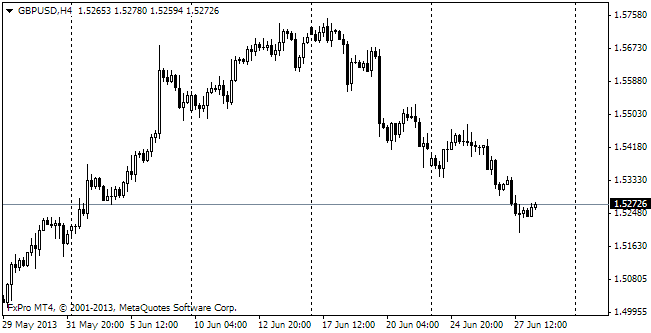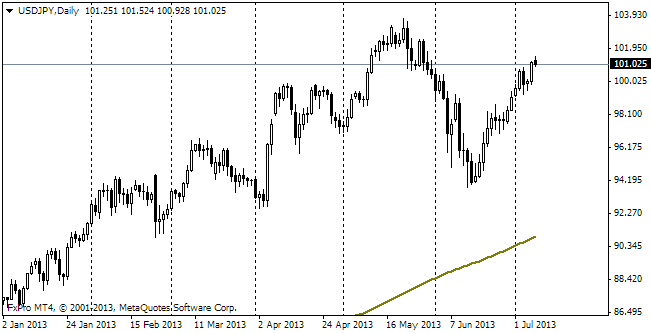EUR/usd
Yesterday we witnessed a fierce fight between bulls and bears. The latter thwarted three attempts to push the pair below 1.37. The former failed to raise the rates above 1.3750. However, both the camps seemed to spare their strength before the important end of the week. Today the main event for the euro/dollar is a press-conference of the ECB head after the regular monetary policy meeting. As has been mentioned earlier, despite the economic recovery the eurozone still needs incentives. In this connection we supposed that when an opportunity came up, that is when inflation slowed down and the situation with liquidity got worse, the rate cut and other incentives would be easy to implement. But this month inflation hasn't slowed down and the economic reports show that the positive impulse is preserved. It is hardly possible that Germany and the countries sympathizing with it will find easing of the policy reasonable under such conditions. In this regard, we believe that draghi will focus on positive aspects when highlighting forecasts of the committee, which is likely to support the single currency. On the other hand, the US affairs are improving, at least according to the Beige Book, published yesterday afternoon. There different regional representatives of the Fed say that despite the weather business activity is growing. It means that if Friday's employment statistics are not bad, fomc will cut bond-buying by another 10bln dollars in two weeks. As to the labour market: as expected, ADP's non-farm employment statistics were strongly revised. According to them, in February employment grew by 139K against the expected 160K, January's growth was revised down from 175 to 127 and December's one – from 227 to 191. So, the actual data proved to be worse than the forecasted rates by over 100K.The initial selling of the dollar, as has already been mentioned, stumbled over quite a good demand, which pushed the pair from 1.3750 back to 1.37. The further attempts to sell the dollar on a rather weak ISM Non-Manufacturing PMI were also futile. Trading is still held in the middle of the above-mentioned range.
GBP/USD
The British Services PMI, published yesterday, showed that the country is still demonstrating impressive growth rates. The indicator made 58.2 against the expected 58.0 and the previous rate of 58.3. Again it inspired the pound-bulls, which eventually helped to strengthen its positions both against the dollar and the euro. The cable not only returned above 1.67, but stayed there despite the dollar's attempts to grow last night. Risk demand is also favourable for the pound, so the pair may remain at these levels for some more time. Today's meeting of the MPC will hardly surprise by anything, so all attention will be focused on the eurozone and the US statistics.

USD/CAD
As expected, yesterday the BOC focused on the positive aspects. It is not surprising for those who consider the reports by the CBs of the developed countries in the recent month or two. Acceleration in the USA is often followed by acceleration in other countries, which we see now in Canada. In our opinion, the general downward trend of the Loonie is over and now the currency is to face a certain period of stabilization in a wide range between 1.09 and 1.12.

USD/JPY
The Japanese yen has been depreciating actively this week. The reason is dovish comments of the CB's representatives and renewed demand for risky assets. Besides, there is a feeling that capital repatriation in Japan is losing its momentum, so the balance between buyers and sellers has shifted in favour of the latter.
